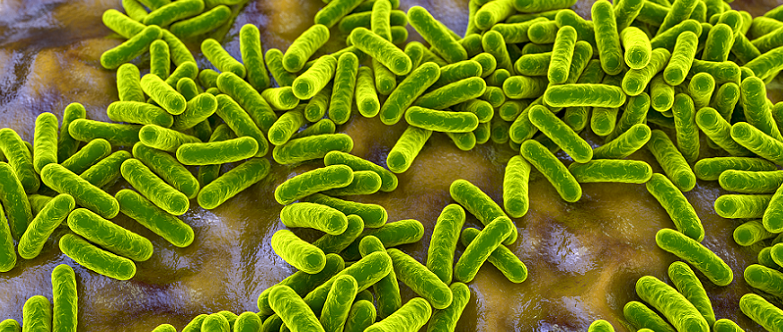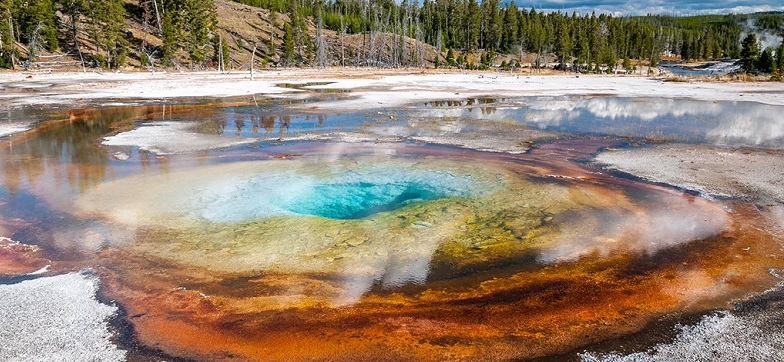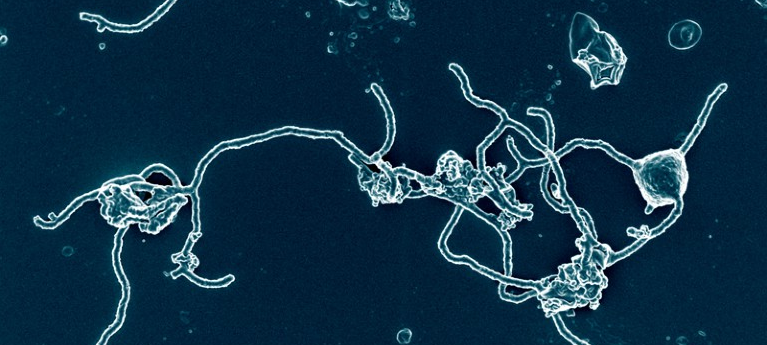The domains of cellular life, Archaea and Bacteria, are distinct from each other, although both are prokaryotes as they have a unicellular structure without a nucleus. Although they appear similar under a microscope, DNA analysis shows that Archaea are as distinct from Bacteria as they are from humans. Discovered in the 1970s as a distinct life form, Archaea hold a significant role in daily life, including being part of the human gut microbiome.
Primary Differences Between Archaea and Bacteria
Archaea and Bacteria are two of the three domains of life, with the third being Eukarya. Archaea and Bacteria have several differences that distinguish them from each other. One of the main differences is their cell wall structure. Bacteria have a cell wall made of peptidoglycan, while Archaea have a unique cell wall made of pseudopeptidoglycan or no cell wall at all.
Another difference is the type of lipids found in their cell membranes, with Archaea having ether-linked lipids and Bacteria having ester-linked lipids. In terms of metabolism, Archaea are more versatile and are capable of surviving in extreme environments such as high salt concentrations and high temperatures, while Bacteria have a more limited metabolic range.
Additionally, Archaea and Bacteria have different genetic structures, with Bacteria having circular chromosomes and Archaea having linear or multiple chromosomes, and the genetic material of Archaea has a different structure, including a unique type of ribosome. The main differences between the two are:
- Cell Wall: Bacteria have a simple cell wall made of peptidoglycan, while Archaea have a unique cell wall made of pseudopeptidoglycan or no cell wall at all.
- Lipids: The lipids in the cell membranes of Archaea are ether-linked, while those of Bacteria are ester-linked.
- Metabolism: Archaea are more versatile in terms of metabolism, with some capable of surviving in extreme environments such as high salt concentrations and high temperatures, while most Bacteria have a more limited metabolic range.
- Genetics: Bacteria have circular chromosomes, while Archaea have linear or multiple chromosomes. The genetic material of Archaea also has a different structure, with archaea having a unique type of ribosome.
- Evolution: Archaea and Bacteria have separate evolutionary histories, with no evidence of interbreeding between the two domains.

The Discovery of Archaea
The discovery of Archaea as a separate domain of life was a significant event in the history of biology. Prior to the discovery of Archaea, all microorganisms were classified as either bacteria or fungi. The discovery of Archaea challenged this view and expanded our understanding of the diversity of life on Earth.
The discovery of Archaea can be traced back to the 1970s, when researchers first began to study microbial communities in extreme environments, such as hot springs and deep-sea vents. These environments are characterized by high temperatures, high pressure, and high salt concentrations, and they were thought to be inhospitable to life. However, when researchers cultured and studied the microorganisms from these environments, they found that they were distinct from both bacteria and fungi and belonged to a new group of microorganisms.
Further studies confirmed that these microorganisms were indeed a separate domain of life, with distinct molecular and physiological characteristics. This discovery revolutionized our understanding of the diversity of life on Earth and has led to a deeper appreciation of the ability of microorganisms to adapt to and thrive in a wide range of environments.
The Role of Archaea
Archaea are a domain of microorganisms that are found in a range of habitats, including extreme environments. They play important roles in the functioning of ecosystems, such as serving as primary producers, decomposers, and symbionts. Some species of Archaea are capable of producing their own food through photosynthesis or chemosynthesis, and others play a role in the decomposition of organic matter and the cycling of nutrients.
In symbiotic relationships, some species of Archaea are found in the gut of certain animals, where they help break down complex carbohydrates. They are well-adapted to extreme environments, such as those with high salt concentrations, high temperatures, and high pressures, and they are valuable indicators of such environments and potential biomarkers for the search for life on other planets.
Additionally, Archaea are being used in biotechnology, particularly for the production of biofuels and industrial chemicals, and for bioremediation. Overall, the study of Archaea has provided valuable insights into the diversity and adaptability of life on Earth.

Archaea Are Extremophiles
Archaea are known for their ability to survive and thrive in extreme environments, which is why they are often referred to as “extremophiles.” These environments include habitats such as hot springs, salt lakes, deep-sea vents, and highly acidic or alkaline environments.
Archaea have a unique set of adaptations that allow them to survive in these extreme conditions, such as specialized membrane lipids that are more stable at high temperatures, and enzymes that are able to function in high salt concentrations or acidic or alkaline conditions.
The discovery of Archaea as extremophiles has expanded our understanding of the limits of life on Earth and has challenged conventional views about what constitutes a habitable environment. It has also led to the development of new technologies and industrial processes, such as the production of biofuels and industrial chemicals using extremophilic Archaea.
The study of extremophilic Archaea has provided valuable insights into the mechanisms of survival and adaptation in extreme environments, and has expanded our understanding of the diversity and adaptability of life on Earth.

Archaea and the Origins and Future of Life
The study of Archaea has provided valuable insights into the origins and future of life on Earth. Archaea are one of the three domains of life, along with Bacteria and Eukarya, and they have a unique set of molecular and physiological characteristics that distinguish them from other forms of life.
Archaea are known for their ability to survive in extreme environments, such as hot springs, salt lakes, and deep-sea vents. This has led to the discovery of new habitats for life and the expansion of our understanding of the limits of life on Earth.
In terms of the origins of life, the discovery of Archaea has challenged the conventional view that Bacteria were the first life forms to evolve on Earth. Some studies have suggested that Archaea may have arisen before Bacteria, and that they may have played a role in the origin of life on Earth.
In terms of the future of life, the study of Archaea has expanded our understanding of the mechanisms of survival and adaptation in extreme environments, and has provided valuable insights into the potential for life to exist on other planets. For example, the discovery of Archaea in extreme environments has led to the development of new strategies for the search for life on other planets, and has provided valuable information about the types of environments that may be suitable for life.

